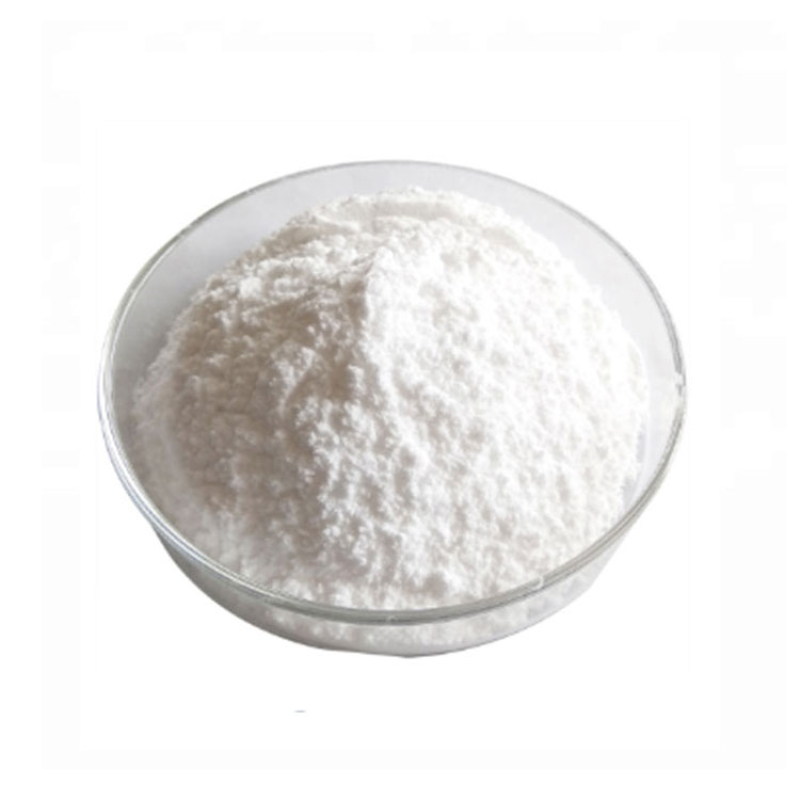Products Description of Prussian Blue CAS#14038-43-8Prussian Blue, also known as Berlin Blue, Gong Blue, Iron Blue, Milori Blue, Chinese Blue, Milori Blue, Hualan. It is an ancient blue dye that can be used for glazing and oil painting dyes. Prussian blue brings us a breathtaking beauty. It is not only a unique color, but also reflects a precipitated texture.Prussian blue is a blue dye discovered in 1706. Its structure is composed of Fe (II) and Fe (III) coordinated with cyano (-CN-).
Contact Now
Products Description of PhenetidineCAS#156-43-4Colorless oily flammable liquid. It gradually turns red to brown when exposed to air and sunlight.
Contact Now
Tolyltriazole CAS#29385-43-1Tolyltriazole is a water-stabilizing chemical that inhibits corrosion by bonding to metal parts and machinery surfaces to prevent water from destabilizing the molecular structure of the metal. It creates an electrochemical barrier that is thick enough to deter corrosive chemicals. This barrier is very durable and features favorable oxidative and thermal stability. The long-term protective barrier created by tolyl triazole does not contaminate process fluids or the metal material of piping systems.
Contact Now
Products Description of Lantanium Nitrate CAS#10277-43-7Lanthanum nitrate hexahydrate is a colorless crystalline solid with a distinctive nitrate odor. - It is relatively stable at room temperature, but can decompose when heated to produce toxic nitrous oxide gas.
Contact Now
Products Description of METHYLENE BLUE CAS#61-73-4Methylene blue (MB) is a reducing agent that is easily soluble in water and easily crosses cell membranes. It has relatively no toxic side effects and is an approved clinical drug. Since its introduction to the biological community in the 19th century, methylene blue has been widely used: as a dye in neurochemicalbook anatomy and bacteriology; in biochemical research, methylene blue serves as an indicator of redox effects.
Contact Now
Products Description of Solvent Blue 104 CAS#116-75-6Solvent blue 104 is used for packaging, decoration, paint, ink, and coloring of polyester, nylon, etc.Solvent Blue 104 Chemical PropertiesMelting point 236.5-237.5 °CBoiling point 639.5±55.0 °C(Predicted)density 1.220±0.06 g/cm3(Predicted)vapor pressure 0-0.001Pa at 20-25℃storage temp. Refrigerator, under inert atmospheresolubility Chloroform (Slightly)form Solidpka-0.26±0.20(Predicted)color Very Dark Blue to BlackDissociation constant0 at 30℃CAS DataBase Reference116-75-6(CAS DataBase Reference)E
Contact Now
Products Description of Monoethanolamine CAS#141-43-52-Hydroxyethylamine, also known as ethanolamine, is an organic compound with the chemical formula C2H7NO.Monoethanolamine Chemical PropertiesMelting point 10-11 °C(lit.)Boiling point 170 °C(lit.)density 1.012 g/mL at 25 °C(lit.)vapor density 2.1 (vs air)vapor pressure 0.2 mm Hg ( 20 °C)refractive index n20/D 1.454(lit.)Fp 200 °Fstorage temp. Store at +15°C to +25°C.solubility Soluble in benzene, ether, carbon tetrachloride.pka9.5(at 25℃)form Liquidcolor
Contact Now
Products Description of Copper (II) Nitrate Hydrate CAS#10031-43-3Copper nitrate trihydrate is a white powder, easy to deliquesce, easily soluble in water, with a solubility of 45g at 0℃. It can be reprecipitated by adding concentrated nitric acid. It decomposes into nitrogen oxides and copper oxide when red hot, and is decomposed by hydrochloric acid. Common hydrates are hexahydrate Cu(NO3)2·6H2O and trihydrate Cu(NO3)2·3H2O. The former is a blue crystal with a relative density of 2.074.
Contact Now
Products Description of Glucosamine sulfate CAS#14999-43-0D-glucosamine sulfate was first included in the 27th edition of the United States Pharmacopoeia and is a drug for the treatment of arthritis. Arthritis has become the world's number one disabling disease. With the intensification of arthritis pain and the obstruction of activity, it will lead to temporary or permanent loss of ability to work. It brings significant losses to society and the economy. D-glucosamine sulfate is the main matrix of joint cartilage and synovial fluid because of its high activity and easy absorption.
Contact Now
Products Description of 2-Chlorothiophene CAS#96-43-52-Chlorothiophene is used as an intermediate in organic synthesis and medicine. 2-Chlorothiophene CAS#96-43-5 Chemical PropertiesMelting point -71.9 °CBoiling point 127-129 °C (lit.)density 1.286 g/mL at 25 °C (lit.)refractive index n20/D 1.547(lit.)Fp 73 °Fstorage temp. 2-8°Csolubility soluble in Chloroformform LiquidSpecific Gravity1.286color Clear colorless to light brownWater Solubility INSOLUBLEBRN 104652Stability:VolatileInChIKeyGSFNQBFZFXUTBN-UHFFFAOYSA-NC
Contact Now
Products Description of Monoethanolamine CAS#141-43-52-Hydroxyethylamine, also known as ethanolamine, is an organic compound with the chemical formula C2H7NO.Monoethanolamine Chemical PropertiesMelting point 10-11 °C(lit.)Boiling point 170 °C(lit.)density 1.012 g/mL at 25 °C(lit.)vapor density 2.1 (vs air)vapor pressure 0.2 mm Hg ( 20 °C)refractive index n20/D 1.454(lit.)Fp 200 °Fstorage temp. Store at +15°C to +25°C.solubility Soluble in benzene, ether, carbon tetrachloride.pka9.5(at 25℃)form Liquidcolor
Contact Now
Products Description of Copper(II) sulfate pentahydrate CAS#7758-99-8Copper sulfate pentahydrate (chemical formula: CuSO4·5H2O) is blue vitriol, blue triclinic crystal, easy to weather in dry air, lose 4 molecules of crystal water when heated to 190℃, and become anhydrous salt at 258℃. Toxic. Soluble in water, insoluble in ethanol. Can be used for pesticides, harmful if swallowed, irritating eyes and skin, and can have long-term adverse effects on the aquatic environment.Copper sulfate crystals are beautiful blue crystals in plate or short columnar shape with a beautiful blue color.
Contact Now
Products Description of Trimethyl borate CAS#121-43-7Moisture-sensitive liquid, fuming in the air. Melting point -29.3℃, boiling point 68-69℃, forms azeotropic mixture with methanol, azeotropic point 55℃, relative density (20/4) 0.920, refractive index (nD25) 1.3543 (1.3548). Very flammable, flash point -1℃. Miscible with ether, methanol, tetrahydrofuran, isopropylamine and hexane.
Contact Now
Products Description of Indigo CAS#482-89-3Indigo is a vat dye with a history of more than 3,000 years. Xun Kuang's famous saying of the Warring States Period, "Blue, comes from blue and is better than blue" originated from the indigo dyeing technology at that time. "Qing" here refers to cyan, and "blue" refers to the blue grass from which indigo is made.
Contact Now
Monoethanolamine CAS# 141-43-5Ethanolamine is a variety of viscous hygroscopic amino alcohol incorporates each amine and alcohol chemical groups. It is extensively dispensed interior the physique and is a thing of lecithin. It has many sorts of industrial applications. For example, it can be used in the manufacturing of agricultural chemical compounds such as ammonia as properly as the manufacturing of prescription drugs and detergents. It can additionally be used as a surfactant, fluorimetric reagent and casting off agent of CO2 and H2S.
Contact Now
Products Description of AzuleneCAS#275-51-4Aurobinol is a structural isomer of naphthalene, which appears as small blue leaves or monoclinic flaky crystals with the smell of naphthalene. It is soluble in general organic solvents but insoluble in water.
Contact Now
Products Description of Cupric oxide CAS#20427-59-2Chemical formula Cu(OH)2. Molecular weight 97.56. Blue to blue-green gel or light blue crystalline powder, toxic. Relative density 3.37. Color darkens at 60-80℃. Insoluble in cold water, decomposes into copper oxide in hot water, dissolves in acid to form divalent copper salt, dissolves in excess concentrated alkali to form tetrahydroxy cuprate, dissolves in concentrated ammonia or potassium cyanide solution to form dark blue tetraamminecopper(II) dihydroxide solution or colorless potassium tetracyanocuprate(II) solution.
Contact Now
Products Description of Crystal Violet CAS#548-62-9Gentian violet, also known as crystal violet and basic violet 3, is a commonly used artificial basic dye along with methyl green, neutral red, methylene blue, safranin, hematoxylin, malachite green, methyl violet and basic fuchsin. The dye index number is CIBasicViolet3(42555). It belongs to the triaminotriphenylmethane compound. It has the appearance of dark green powder or flaky crystals with bronze luster.
Contact Now
Products Description of Direct Pigment Yellow 42 CAS#51274-00-1Barium sulfate has its chemical formula BaSO4. It is colorless or white orthorhombic crystals with relative molecular mass of 233.4, the relative density of 4.5 (15 ℃), the melting point of 1580 ℃, and the Refractive index of 1.637. Upon being heated to 1149 ℃, it will become monoclinic crystalline when the refractive index is 1.649. It is almost insoluble in water with the solubility being 0.00022 at 18 ℃ and 0.0041 at 100 ℃.
Contact Now
Product Description:Benzene (C₆H₆) is a widely used aromatic hydrocarbon with a colorless, highly flammable liquid form and a sweet odor. It is an essential raw material in the chemical industry, particularly in the production of polymers, synthetic fibers, rubber, and various other chemicals.
Contact Now
Products Description of SODIUM TRISILICATE CAS#13870-30-9Sodium silicate is a water-soluble silicate, which can be divided into three forms: solid, liquid, and water-quenched. In theory, this type of substance is called "colloid". Industrial solid sodium silicate is a colorless, slightly light blue, turquoise, sky blue or yellow-green transparent or translucent glass block. When the impurity content is very low, the glassy anhydrous solid sodium silicate is a colorless and transparent glass body, and pure solid sodium cinnamate is a colorless and transparent solid.
Contact Now
Products Description of Tannic acid CAS#1401-55-4Tannic acid, also known as tannic acid, is an organic compound with a chemical formula of C76H52O46. It is a yellow or brownish yellow powder. Its aqueous solution turns blue-black when it meets an iron salt solution. Adding sodium sulfite can delay the discoloration.In industry, tannic acid is widely used in tanning leather and making blue ink. Tannic acid can coagulate protein. People use tannic acid to chemically treat raw pig skin and raw cow skin, which can coagulate the soluble protein in the raw skin.
Contact Now
Products Description of 2,3-Difluorophenol CAS#6418-38-82,3-Difluorophenol is a chemical substance.2,3-Difluorophenol Chemical PropertiesMelting point 39-42 °C (lit.)Boiling point 54 °C/25 mmHg (lit.)density 1.2483 (estimate)Fp 134 °Fstorage temp. Inert atmosphere,2-8°Cpka7.71±0.10(Predicted)form powder to lump to clear liquidcolor White or Colorless to Almost white or Almost colorlessBRN 2082265InChIKeyRPEPGIOVXBBUMJ-UHFFFAOYSA-NCAS DataBase Reference6418-38-8(CAS DataBase Reference)Safety InformationHazard Codes F,Xn,Xi,CRisk Statements&
Contact Now
Products Description of 2-Chlorophenol CAS#95-57-8 o-Chlorophenol is a colorless to yellow-brown liquid, m.p.8.7℃, b.p.175℃, n25D 1.5565, relative density 1.265.
Contact Now



































